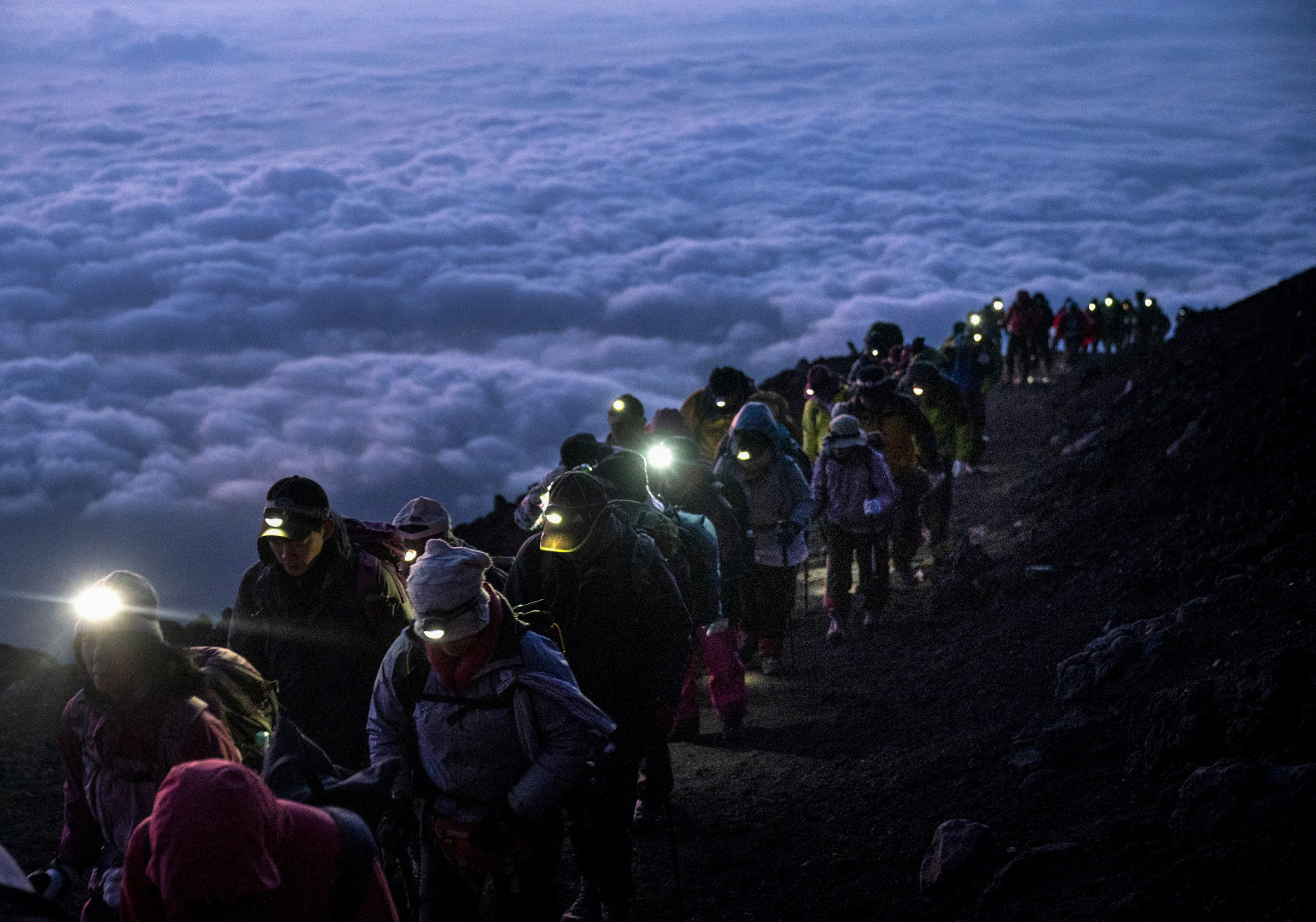
‘A bit scary’: as hikers flock to Japan’s Mount Fuji, fears of climbing accidents grow
- Local authorities are considering plans to limit the number of hikers for the coming climbing season
- The owner of one mountain hut says he has stopped taking bookings for overnight stays this summer for fear of overcrowding
The mayor of one town at the base of the 3,776-metre-tall mountain has proposed limiting the number of people who attempt overnight ascents of the peak in an effort to safeguard hikers and not overwhelm facilities on the trek, while the owner of one mountain hut has told This Week in Asia that he has stopped taking bookings for overnight stays.
Hiroyuki Ikeda, the owner of the Ikeda-Kan hut at the eighth station on the Fujinomiya route to the summit, said, “The situation is getting a bit scary because so many people want to climb the mountain this summer. I can foresee lots of problems and places where there could be trouble.”

In a typical year, around 300,000 people ascend Mount Fuji during the climbing season, which this year will end on September 10. That number contracted dramatically in recent years as a result of the coronavirus pandemic, with the owners of mountain huts limiting operations or shutting down altogether. In addition, there have been virtually no foreign tourists in Japan for the last two summers.
That has changed, however, with foreign visitors flocking back to Japan and many putting an ascent of Mount Fuji on the top of their wish list. Similarly, Japanese who have put off an attempt now feel that the opportunity has arrived.
This year marks a decade since Mount Fuji was granted Unesco World Heritage status, which could also explain the growing enthusiasm for scaling the iconic peak.
Local authorities are bracing themselves for the coming climbing season, with Shigeru Horiuchi, the mayor of the town of Fujiyoshida, appealing for help from the Yamanashi prefectural government.
“We have to consider limiting the number of climbers on the mountain,” Horiuchi said in mid-May.
“We will study what measures we can take,” the Yomiuri newspaper quoted the mayor as saying. “We want to ask the prefectural government to take measures in cooperation with us.”

There is no system in place at the moment to limit the number of people setting out to climb the mountain, or to verify that they are properly equipped for the hike. Every year, people who are convinced that the ascent will be an easy stroll are caught out by the testing conditions, including the dramatic change between the traditional starting point halfway up the mountain and at the top, where the temperature can be below zero and the powerful winds make it feel a good deal colder.
The routes up the peak are marked but there have been cases of people missing markers in the past, particularly at night, and becoming lost. There is also the very real possibility of a hiker turning an ankle on the rock-strewn tracks, falling or being struck by falling rocks, while hypothermia and altitude sickness can also be a problem at the very highest elevations.

But Ikeda fears that the sheer volume of people is going to pose the biggest danger this summer.
“I can understand that people who have not been able to climb the mountain for a few years want to do it this summer, but it will be dangerous and there are going to be problems,” he said.
“My worry is that people assume they will be able to take shelter in my hut or in the other huts on the route, especially if the weather is particularly bad,” he said. “But we only have space for 180 people to stay and if we are full, there will be no place for other people to rest.
“They will have no choice but to keep climbing, which could be dangerous if the conditions are bad.”

The association of mountain lodge operators has also called for a halt to the practice known as “bullet climbing”, by which hikers arrive at the start of the hike in the evening, climb all night without resting or acclimatising to the altitude, and reach the peak in time to see the sun rise.
In a statement, the organisation said, “Climbing overnight increases the risks of accidents and altitude sickness because of exhaustion. In recent years, ‘bullet climbers’ have become a problem. The local government has announced that this dangerous form of climbing should be stopped.”
There are four major routes to the summit, with the Kawaguchiko, Subashiri, Gotemba and Fujinomiya routes all having a number of mountain lodges. An ascent will typically take between five and seven hours, while the descent usually lasts around three hours.

